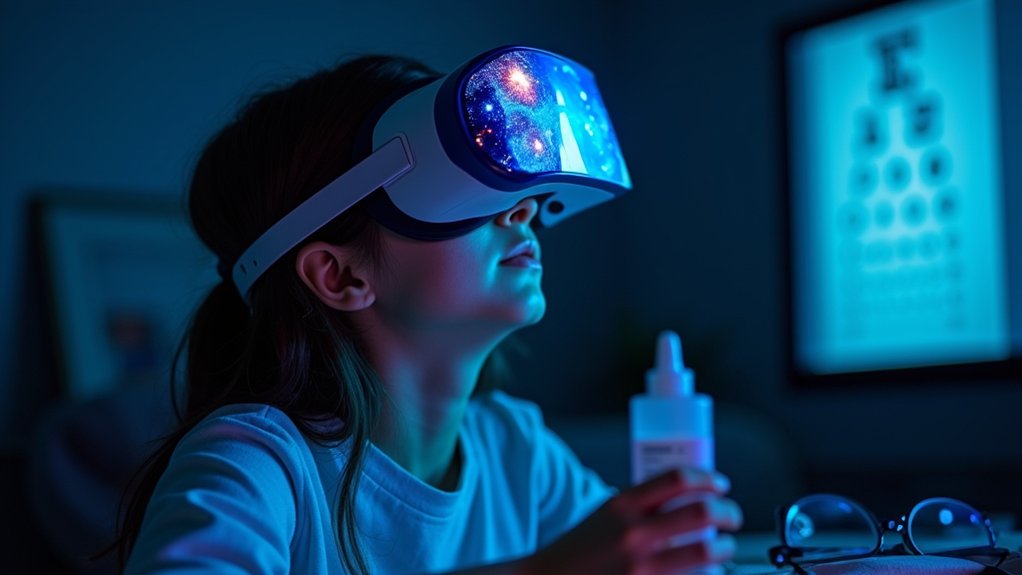How virtual reality impacts eyesight over time
Curious about how virtual reality impacts eyesight? As VR headsets become more common in gaming, education, and daily life, many users wonder about the effects these immersive displays have on eye health. From eye strain and blurred vision to concerns about children’s developing eyesight, understanding the risks is key to using VR safely. In this guide, we’ll explore what science says about VR and vision, the most common symptoms, and practical tips to protect your eyes while enjoying virtual worlds.

Understanding how VR displays affect the eyes
Virtual reality (VR) technology offers an incredibly immersive experience, but VR displays can put a strain on your eyes. When using a VR headset, each eye views a separate image on a screen just inches away, making VR displays unique compared to natural viewing.
This setup forces your eyes to constantly converge and accommodate, which can create challenges for your visual system. Extended sessions with VR displays can make it difficult to maintain comfortable focus.
It’s essential to understand how VR displays impact eye health, especially for those who love exploring technology, apps, smartphones, and software.
Common eye strain symptoms linked to VR use
Many individuals notice uncomfortable symptoms related to eye strain after spending time in virtual reality (VR). You might experience tired eyes, dry eyes, or irritated eyes, along with headaches or blurred vision.
Some VR users report difficulty focusing or increased sensitivity to light. These symptoms often surface after VR sessions that last more than a few minutes.
Recognizing these signs early helps you adjust your VR habits and reduce the risk of ongoing discomfort associated with VR use.
Research on prolonged VR exposure and vision health
A wealth of scientific research has delved into the effects of prolonged VR exposure on vision health. Findings indicate that extended VR sessions can elevate the risk of digital eye strain, blurred vision, and difficulty focusing.
Some studies even suggest that prolonged VR exposure might temporarily diminish contrast sensitivity and exacerbate dry eye symptoms.
To safeguard your vision during frequent or lengthy VR usage, it’s crucial to take regular breaks. By doing so, you can help mitigate the potential negative impacts of extended VR exposure on your eyes.
Impact of VR on children’s developing eyesight
Virtual reality (VR) is revolutionizing the way we experience technology, but it’s essential to consider its effects on children’s developing eyesight. As their eyes are still maturing, kids are more susceptible to the impact of VR.
When children use VR headsets, their eyes need to continually adjust to artificial distances and rapid image changes. This constant adjustment can strain their focusing system, potentially disrupting normal visual development.
Prolonged VR exposure might increase the risk of eye fatigue, blurred vision, or even early-onset myopia. As VR becomes more integrated into apps and software for smartphones and other devices, parents need to be mindful of how it affects their children’s eyesight.
Recommendations for reducing eye fatigue in VR
Feeling tired or strained after using VR for long periods? It’s time to take some proactive steps to reduce eye fatigue in VR.
One effective technique is the 20-20-20 rule: every 20 minutes, look at something 20 feet away for 20 seconds.
Ensure your VR headset is adjusted for a proper fit and optimal brightness. Keep the lenses clean to maintain clear visuals, and remember to blink often to keep your eyes moist.
Future innovations to protect eyes during VR experiences
As virtual reality (VR) technology continues to advance, eye health is becoming a top priority for developers and researchers.
Future VR headsets are expected to come equipped with adaptive displays that reduce blue light exposure, dynamic focus adjustments, and eye-tracking systems specifically designed to minimize eye strain.
Some innovative companies are even exploring AI-driven alerts that remind users to take regular breaks.
These advancements in VR technology aim to make your virtual reality experiences safer and more comfortable for your eyes.
With these cutting-edge features, you can immerse yourself in VR worlds without compromising your eye health.
Conclusion
Using Virtual Reality (VR) can be an exciting venture into the digital world, but it’s crucial to be aware of how VR impacts eyesight over time. When you immerse yourself in VR, your eyes work hard to keep up, potentially leading to issues like eye strain and dryness. To protect your eyesight while enjoying VR, remember to take regular breaks and adjust your VR headset properly. Following expert guidelines can also help you avoid long-term vision problems, especially if you’re younger. By practicing mindful VR usage and utilizing these simple tips, you can enjoy safer, healthier VR experiences. Remember, VR impacts eyesight, so staying informed and cautious ensures a better experience.